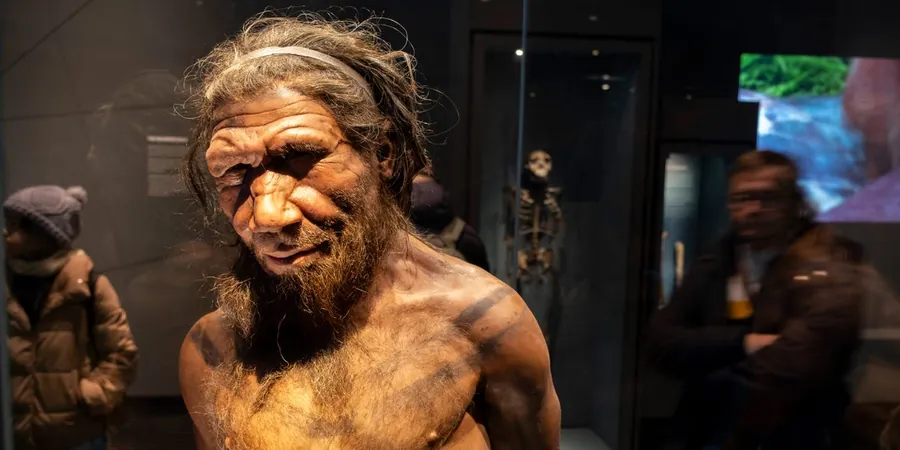
The Astonishing Discovery: A Unique Line of Neanderthals Unveils Clues to Humanity's Last Extinction
2024-09-25
Introduction
In a groundbreaking revelation, researchers have uncovered fascinating details about a Neanderthal named Thorin, who roamed southeastern France tens of thousands of years ago, at a time just before the Neanderthal species vanished. This discovery is not merely a footnote in archaeology; it may hold vital insights into the reasons behind one of humanity's most significant extinction events.
Thorin's Discovery and Its Implications
Thorin's remains were unearthed in 2015, igniting a heated debate among scientists. Archaeologists dated him between 50,000 and 42,000 years old, while geneticists argued his DNA suggested he was closer to 100,000 years old. This discrepancy prompted a comprehensive seven-year investigation, with the latest study comparing Thorin's DNA to other Neanderthal remains worldwide. The shocking conclusion? Thorin belonged to a distinct lineage, separate from his contemporaries; his ancestors split from other Neanderthals approximately 103,000 years ago.
Isolated Lineage
This astonishing genetic divergence explains why Thorin’s DNA appears more ancient than his physical remains suggest. Researchers found that Thorin’s unique lineage developed due to prolonged isolation, as he lived in a community cut off from other Neanderthal groups. They hypothesize that this isolation lasted over 50,000 years, leading to inbreeding and diminished genetic diversity—a critical factor in the eventual extinction of Thorin’s population.
Cultural Choice Over Geographical Barriers
Interestingly, it seems that the isolation was not enforced by geographical barriers but rather by a cultural choice. Evidence shows that other Neanderthals inhabited regions mere weeks away from Thorin’s community in the Massif Central, leading researchers to postulate that social and cultural factors played a significant role in their seclusion. Archaeologist Ludovic Slimak emphasized, 'It’s a social border.' This insular behavior, while advantageous in the short term, ultimately made Thorin’s group vulnerable to diseases and environmental shifts, culminating in their silent extinction.
Implications of Scarcity and Isolation
The overarching question remains—was this isolation characteristic of all Neanderthals, or an anomaly exhibited by Thorin's group? Some experts suggest that scarcity of resources may have reinforced such insularity, with groups turning inward to safeguard their members. As the Neanderthal population dwindled, the ramifications of losing even a single breeding adult became catastrophic, ultimately endangering the entire lineage.
Survival Strategies: Neanderthals vs. Modern Humans
In contrast, modern humans appear to have thrived due to their expansive social networks, which facilitated genetic diversity and resilience against environmental challenges. This contrast raises an intriguing point about survival strategies: Neanderthals' tendency towards isolation could have fueled their extinction, while modern humans embraced diversity, expanding their genetic pool and increasing their chances of survival during tumultuous times.
Conclusion
As researchers delve deeper into the complexities of Neanderthal extinction, this discovery about Thorin and his unique lineage may serve as a key to understanding not only the fate of our ancient relatives but also the evolutionary path that led humanity to thrive. The lessons we learn from Thorin could illuminate critical aspects of social structure, cooperation, and adaptation that resonate in today's world.





 Brasil (PT)
Brasil (PT)
 Canada (EN)
Canada (EN)
 Chile (ES)
Chile (ES)
 España (ES)
España (ES)
 France (FR)
France (FR)
 Hong Kong (EN)
Hong Kong (EN)
 Italia (IT)
Italia (IT)
 日本 (JA)
日本 (JA)
 Magyarország (HU)
Magyarország (HU)
 Norge (NO)
Norge (NO)
 Polska (PL)
Polska (PL)
 Schweiz (DE)
Schweiz (DE)
 Singapore (EN)
Singapore (EN)
 Sverige (SV)
Sverige (SV)
 Suomi (FI)
Suomi (FI)
 Türkiye (TR)
Türkiye (TR)